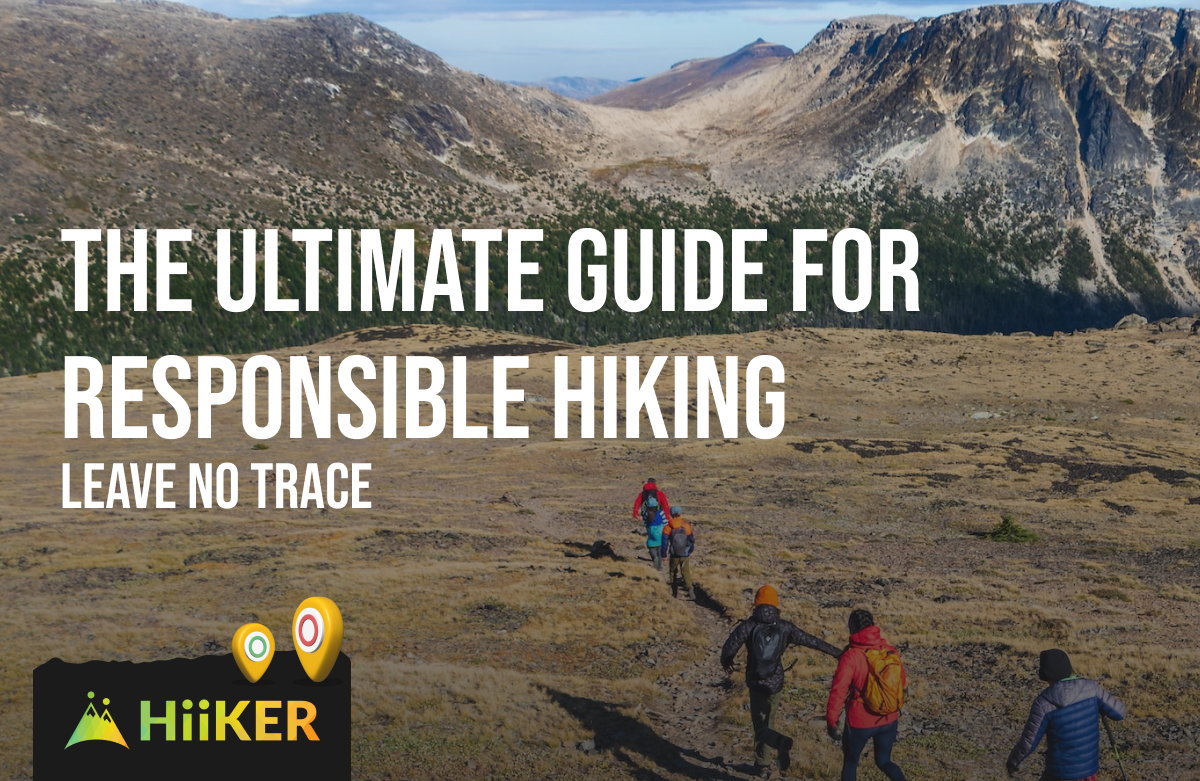Hiking is a fantastic way to escape the hustle and bustle of everyday life and enjoy the beauty of nature. However, it’s important to remember that our presence on the trail can have a significant impact on the environment. That’s why it’s crucial for hikers to follow the Leave No Trace principles, which were established to minimize the impact of outdoor recreation on the environment.

The Leave No Trace Center for Outdoor Ethics is a nonprofit organization that works to educate people about the responsible enjoyment and conservation of outdoor spaces. They have developed a set of seven principles that provide a framework for minimizing the impact of outdoor activities on the environment. In this guide, we’ll explore each of these principles in detail and provide tips on how you can put them into practice.
Principle 1: Plan Ahead and Prepare

Before you hit the trail, it’s essential to plan your hike and prepare for your journey. This includes researching the trail and its conditions, checking the weather forecast, and packing the appropriate gear and supplies.
With HiiKER, you can use all the free tools to plan your hike in great detail. Download your trail map to your phone so you can access it offline. Knowing where you need to go and staying to the route will help with degradation of the vegetation that is essential to support the ecology around the trail.
It’s also essential to have a basic understanding of the Leave No Trace principles so you can practice them while you’re on the trail.
Principle 2: Travel and Camp on Durable Surfaces

When you’re hiking, it’s important to stick to established trails and camp on durable surfaces, such as designated campsites, rock, gravel, or dry grasses. This helps to protect sensitive vegetation and wildlife habitat and reduce erosion.
Principle 3: Dispose of Waste Properly

One of the most critical Leave No Trace principles is to dispose of waste properly. This means packing out all of your trash, leftover food, and litter. It’s also important to bury human waste (💩) at least 200 feet from water sources and trails, using a small-scale backcountry toilet or “cathole.”
Here are the steps to building a cathole:
- Find a suitable location: Look for a spot that is at least 200 feet away from water sources, trails, and campsites. Choose an area that is well-drained and free of roots, rocks, and other obstacles that could prevent digging.
- Dig the hole: Using a small shovel or trowel, dig a hole that is 6 to 8 inches deep and 4 to 6 inches wide. Make sure the bottom of the hole is flat and level.
- Use the cathole: Squat over the hole and do your business, making sure to bury your waste completely and cover it with soil. Use small amounts of soil to cover the waste after each use to reduce odors.
- Use a small airtight bag to dispose of the toilet paper. Do not bury or leave toilet paper behind! This violates principles 3 & 4. Carry this bag with you until you find a suitable place to dispose of it.
- Close the cathole: Once you have finished using the cathole and disposed of the toilet paper, fill the hole with soil, tamping it down to compact the soil and prevent the hole from collapsing. Scatter any leftover soil and leaves to conceal the hole and restore the area to its natural appearance.
It is important to follow these steps carefully to minimize the impact of human waste on the environment and other outdoor enthusiasts.
Principle 4: Leave What You Find

When you’re hiking, it’s important to leave natural and cultural features as you find them. This means not disturbing rocks, plants, or wildlife, and not removing artefacts, signs, or other items from the trail.
Principle 5: Minimize Campfire Impacts

Campfires can have a significant impact on the environment, so it’s essential to minimize their impact as much as possible. This means using a lightweight stove for cooking, using established fire rings or fire pans where they are provided, and avoiding making fires in areas where they are prohibited.
It’s important to check the local laws relating to camping and campfires. While there may be national level laws, these may not apply everywhere.
Principle 6: Respect Wildlife

Wildlife is an essential part of the trail experience, but it’s important to remember that they are wild animals and need to be respected. This means keeping a safe distance, storing food securely, and not feeding or approaching wildlife.
Principle 7: Be Considerate of Other Visitors

Finally, it’s important to be considerate of other hikers, campers, and visitors to the trail. This means keeping noise levels down, respecting privacy, and allowing others to enjoy their experiences just as you want to enjoy yours.
In conclusion, following the Leave No Trace principles is essential for responsible and sustainable hiking. By planning ahead, traveling on durable surfaces, disposing of waste properly, leaving natural and cultural features as you find them, minimizing campfire impacts, respecting wildlife, and being considerate of other visitors, you can help to preserve the beauty and integrity of our trails and natural spaces for generations to come.
To find out more about Leave no trace, visit LNT.ORG
